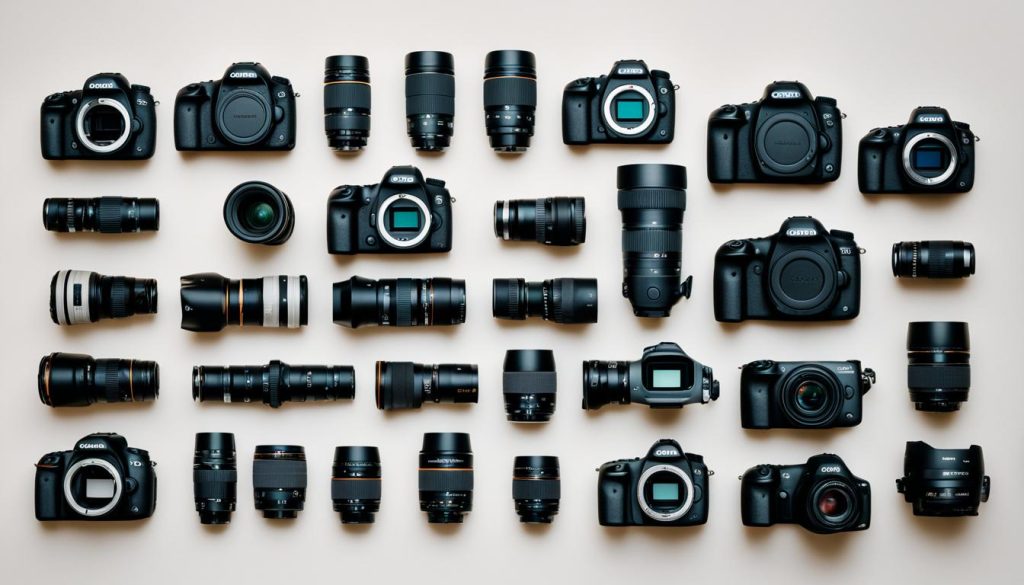Welcome to our beginner’s guide on how to start a photography business in the UK! Whether you have a passion for capturing beautiful moments or are looking to turn your hobby into a successful venture, starting a photography business can be an exciting and rewarding journey.
Setting up a photography business requires careful planning and a solid understanding of the essentials. From determining the costs involved to obtaining the necessary licenses, we’ll take you through the key steps to help you launch your photography business with confidence.
How to Start a Photography Business in the UK?
Writing a Photography Business Plan
A photography business plan is a crucial step in setting the foundation for your photography business. It serves as a roadmap to guide your business towards success and helps you communicate your vision to potential investors, loan advisors, and clients. A well-structured business plan showcases your professionalism and dedication, setting you apart from the competition.
Executive Summary
The executive summary is an overview of your photography business plan. It provides a concise summary of your business concept, target market, goals, and strategies. Consider it as the “elevator pitch” for your business, capturing the essence of what makes your photography business unique.
Opportunity Analysis
An opportunity analysis examines the market and industry trends to identify potential gaps and opportunities for your photography business. This analysis helps you understand your target audience, assess competitors, and determine how you can position your business effectively.
Execution Strategies
Execution strategies detail the concrete steps and tasks needed to bring your photography business plan to life. It includes everything from securing equipment and setting up a physical studio to developing a pricing structure and creating a marketing plan.
Marketing Plan
A comprehensive marketing plan outlines how you will attract and retain customers. This includes identifying your target audience, developing a consistent brand image, utilizing online and offline marketing channels, and creating a strong online presence.
Financial Forecast
A financial forecast projects the estimated revenue, expenses, and profitability of your photography business over a specific period. It helps you determine pricing strategies, budget for equipment and marketing expenses, and understand the financial viability of your business.

| Section | Key Elements |
|---|---|
| Executive Summary | Business concept, goals, target market, strategies |
| Opportunity Analysis | Market analysis, competitor analysis, target audience |
| Execution Strategies | Equipment acquisition, studio setup, pricing structure |
| Marketing Plan | Target audience, branding, online/offline marketing |
| Financial Forecast | Revenue projections, expense budgeting, profitability |
Financial Considerations for Starting a Photography Business
Starting a photography business requires careful planning and budgeting. Before diving into the world of professional photography, it’s important to consider the financial aspects involved. From equipment costs to ongoing expenses, understanding your financial obligations will help you make informed decisions and set realistic goals for your business.
One-Time Costs
Equipment: Investing in quality photography equipment is essential for capturing stunning images and delivering professional results. Some of the necessary equipment includes cameras, lenses, memory cards, external drives, computers, studio lighting, and more. Consider the specific requirements of your photography niche and invest in the equipment that aligns with your vision and goals.
Ongoing Expenses
Marketing Costs: Promoting your photography business is crucial for attracting clients and establishing your brand. However, marketing efforts come with expenses. Whether it’s creating a website, running online ads, or printing promotional materials, allocate a budget for marketing activities to reach your target audience effectively.
Software Subscriptions: To enhance your post-processing capabilities and streamline your workflow, investing in professional editing software is essential. Research and choose the software that best fits your needs and budget, accounting for any recurring subscription costs.
Business Insurance: Protecting your photography business from unforeseen circumstances is vital. Consider obtaining business insurance to cover your equipment and protect against any potential liability.
Accounting Costs: Keeping track of your business finances is crucial for staying organized and compliant with tax regulations. You may choose to do your accounting yourself or hire an accountant to handle financial matters.
Training and Travel Expenses: Continuous learning and enhancing your skills as a photographer is essential for professional growth. Budget for attending workshops, seminars, and photography courses that will elevate your craft. Additionally, consider travel expenses if your photography business involves shooting on-location.
Budgeting and Financing Options
Developing a comprehensive budget for your photography business will help you allocate resources effectively and gauge your financial progress. Consider creating a spreadsheet to track your income, expenses, and profitability, allowing you to make strategic decisions based on accurate financial data.
If you find yourself in need of additional funding to cover the initial costs of starting a photography business, exploring financing options can be a viable solution. Photography business loans and other financing options are available, allowing you to access the necessary capital to kickstart your venture.
By understanding the financial considerations involved in starting a photography business, you can set realistic goals, make informed decisions, and ensure the long-term success of your venture. Remember, budgeting, financial planning, and exploring financing options will provide a solid foundation for your photography business to thrive.
Qualifications and Experience in the Photography Industry
While formal qualifications are not always necessary to start a photography business, having experience and a strong portfolio is important. Many photographers may have taken college or university courses to develop their technical skills, or vocational degrees in art, design, or photography. Ongoing learning and training can also help keep your business ahead of the curve.
Formal Photography Qualifications
Although formal photography qualifications are not required to start a photography business, they can provide you with valuable knowledge and skills. Many educational institutions offer photography courses and programs that cover topics such as composition, lighting techniques, post-processing, and business management. Additionally, obtaining formal qualifications can lend credibility to your business and attract clients.
Building a Portfolio
Building a portfolio is essential for attracting clients and showcasing your work. Your portfolio should consist of a variety of high-quality images that highlight your skills and expertise. Include a mix of different photography genres such as portrait, landscape, event, or product photography, depending on your target market. Display your portfolio on your website or create a physical portfolio that you can present to potential clients.
Obtaining Photography Licenses and Permissions
Depending on the locations in which you operate your photography business, you may need to obtain certain licenses and permissions. For example, if you plan to do drone photography, you will need to comply with regulations and obtain the necessary permits. It’s important to research and adhere to local laws and regulations to ensure you are operating legally and ethically.
Skills for Photographers
Besides formal qualifications, there are key skills that every photographer should possess to run a successful business:
- Technical expertise in handling cameras, lenses, and other photography equipment.
- Understanding of composition, lighting, and exposure to capture compelling images.
- Proficiency in post-processing software such as Adobe Photoshop, Lightroom, or Capture One.
- Excellent communication and interpersonal skills to interact with clients and understand their needs.
- Business acumen to manage finances, marketing, and client relationships.
- Creativity and the ability to think outside the box to create unique and memorable photographs.
By continuously refining your skills and staying up to date with the latest trends in photography, you can ensure that your business remains competitive in the ever-evolving industry.
Remember, qualifications and experience go hand in hand in the photography industry. While formal qualifications can provide a strong foundation, real-world experience and a compelling portfolio are equally important in attracting clients and establishing yourself as a reputable photographer.

Registering Your Photography Business
When starting a photography business, one of the important steps is registering your business. In the UK, you have the option to operate as a sole trader or a limited company. Let’s explore these options and the process of registering your photography business.
Sole Trader vs. Limited Company
As a sole trader, you are the sole owner of your business. This means there is no legal separation between your personal and business finances. The registration process for a sole trader is relatively straightforward, requiring you to register as self-employed with HM Revenue and Customs (HMRC).
On the other hand, registering your photography business as a limited company involves more formalities. By forming a limited company, you create a separate legal entity for your business, providing limited liability protection. This means your personal assets are separate from your business assets.
Registering as a limited company involves the following steps:
- Choose a unique name for your company that is not already registered with Companies House.
- Register your company with Companies House.
- Submit the necessary documents and pay the registration fee.
Additionally, it is important to ensure that your chosen business name does not infringe on any existing trademarks or intellectual property rights. Conducting a trademark search can help you avoid potential legal issues in the future.
Choosing a Photography Niche
Specializing in a specific photography niche can help you stand out in the market and attract clients. Consider which niche aligns with your interests, skills, and target audience. Some popular photography niches include:
- Wedding Photography
- Commercial Photography
- Sports Photography
- Portrait Photography
- Fashion Photography
Choosing a niche allows you to focus your marketing efforts and build a strong brand presence within that particular industry.

| Registering Your Photography Business: Pros and Cons | Sole Trader | Limited Company |
|---|---|---|
| Legal Separation of Personal and Business Finances | No | Yes |
| Liability Protection | No | Yes |
| Registration Process | Relatively straightforward | Involves more formalities |
| Business Name Registration | Not required | Required |
| Trademarking Concerns | Less complex | More complex |
Choosing the right legal structure for your photography business depends on the level of liability protection and separation you desire, as well as your long-term goals.
Registering your photography business is an important step in establishing your professional presence in the market. Consider your options carefully and ensure compliance with all legal requirements. This will pave the way for a successful and legally sound photography business.
Essential Equipment for Starting a Photography Business
When starting a photography business, having the right equipment is essential for capturing stunning images. Here are some must-have items to consider:
1. Professional Camera
A high-quality camera is the heart of a photographer’s toolkit. Look for cameras with advanced features, interchangeable lenses, and excellent image quality. Popular options include Canon EOS-1DX Mark III, Nikon D850, and Sony A7R IV.
2. Range of Lenses
To capture different types of shots, invest in a variety of lenses. Wide-angle lenses are ideal for landscapes, while telephoto lenses are perfect for distant subjects. Include prime lenses for sharpness and versatility.
3. Tripod
A sturdy tripod helps maintain stability and reduces camera shake, especially when shooting in low-light conditions or capturing long-exposure images. Look for lightweight yet durable tripods like the Manfrotto MT190XPRO4.
4. Editing Software
Post-processing is an essential part of modern photography. Choose editing software such as Adobe Photoshop or Lightroom to enhance and refine your images, adjusting exposure, colors, and other aspects as needed.
5. Studio Equipment
If you plan to do studio photography, consider studio equipment like backdrops, studio lights, and props. Seamless paper backdrops, softboxes, and light stands are common studio essentials.
6. Photography Accessories
Additional accessories can enhance your photographic capabilities. These may include lens filters, external flashes, remote shutter releases, camera bags, memory cards, and extra batteries.
7. Backup Equipment
It’s vital to have backup equipment in case of malfunctions or failures during critical moments. Having duplicate cameras, lenses, memory cards, and batteries ensures you can continue shooting without disruption.
Investing in quality equipment will set your photography business apart and allow you to produce high-quality images that impress your clients. Remember to assess your specific needs, research different equipment options, and make informed purchasing decisions.

| Equipment | Brand | Model |
|---|---|---|
| Professional Camera | Canon | EOS-1DX Mark III |
| Lenses | Sony | FE 24-70mm f/2.8 GM |
| Tripod | Manfrotto | MT190XPRO4 |
| Editing Software | Adobe | Lightroom |
| Studio Equipment | Impact | Background Support System |
| Photography Accessories | LEE Filters | LEE Digital Starter Kit |
Pricing and Marketing Your Photography Services
Determining how to price your photography services is crucial for the success of your business. It is important to consider various factors when setting your prices, such as the time and effort required for each project, as well as additional costs such as transport and editing time.
Researching the rates of similar photography businesses in your area can provide valuable insights and help you set competitive prices. However, be mindful not to underprice your services, as this can undervalue your work and affect profitability.
Once you have established your pricing structure, it’s time to focus on marketing your photography business to attract clients. In today’s digital age, social media marketing is an effective tool for reaching and engaging with your target audience. Utilize platforms such as Instagram and Facebook to showcase your portfolio, interact with potential clients, and build a strong online presence.
Additionally, implementing SEO strategies for your photography business website can help improve its search engine rankings and increase visibility in organic search results. This can be achieved through optimizing your website’s content, using relevant keywords, and generating high-quality backlinks.
While digital marketing is essential, don’t overlook the power of traditional marketing methods. Consider distributing flyers or brochures in your local area to reach a wider audience. This can help you connect with potential clients who may not be active on social media platforms.
Lastly, it is highly recommended to have photography insurance to protect your valuable equipment and cover any potential liability. Photography insurance can provide peace of mind and safeguard your business against unforeseen circumstances.
Pricing Photography Services Tips:
- Consider the cost of equipment, transport, editing time, and other expenses when determining your prices.
- Research the rates of similar photography businesses in your area to set competitive prices.
- Avoid underpricing your services to maintain profitability and value your work appropriately.
Marketing Your Photography Business Tips:
- Utilize social media platforms to showcase your portfolio and engage with potential clients.
- Optimize your website using SEO techniques to improve its visibility in search engine results.
- Explore traditional marketing methods such as flyer distribution to reach a wider audience.
By implementing effective pricing strategies and marketing techniques, you can attract more clients and establish a successful photography business.
Conclusion
Starting a photography business in the UK requires careful planning, financial considerations, qualifications or experience, registration, essential equipment, pricing, and marketing strategies. By following these steps and continuously improving your skills, you can establish a successful photography business in the UK.
Remember to always stay updated with industry trends and adapt your strategies accordingly. The photography industry is constantly evolving, and being aware of the latest techniques, equipment, and styles will help you stay ahead of the competition and meet the needs of your clients.
Investing in quality equipment and developing a strong portfolio, along with effective pricing and marketing strategies, will enable you to attract and retain clients. Building a reputation for delivering high-quality work and excellent customer service will help your business thrive.
Additionally, don’t forget to stay informed about legal requirements and regulations related to running a photography business in the UK. Ensure that you have the necessary licenses and permissions and consider obtaining photography insurance to protect your equipment and business.





